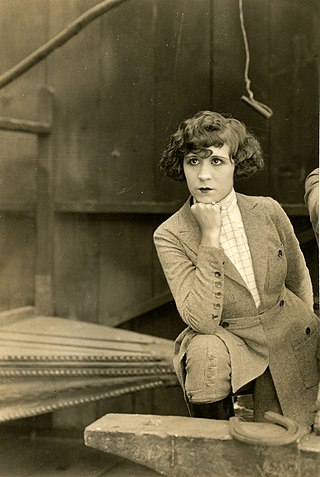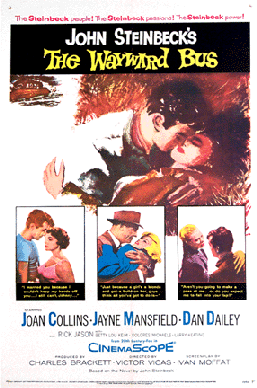
Darryl Francis Zanuck was an American film producer and studio executive; he earlier contributed stories for films starting in the silent era. Best known as a co-founder of 20th Century Fox, he played a major part in the Hollywood studio system as one of its longest survivors. He produced three films that won the Academy Award for Best Picture.

The Sun Also Rises is the first novel by the American writer Ernest Hemingway. It portrays American and British expatriates who travel from Paris to the Festival of San Fermín in Pamplona and watch the running of the bulls and the bullfights. An early modernist novel, it received mixed reviews upon publication. Hemingway biographer Jeffrey Meyers writes that it is now "recognized as Hemingway's greatest work," and Hemingway scholar Linda Wagner-Martin calls it his most important novel. The novel was published in the United States in October 1926, by Scribner's. A year later, Jonathan Cape published the novel in London under the title Fiesta. It remains in print.

Tyrone Edmund Power III was an American actor. From the 1930s to the 1950s, Power appeared in dozens of films, often in swashbuckler roles or romantic leads. His better-known films include Jesse James, The Mark of Zorro, Marie Antoinette, Blood and Sand, The Black Swan, Prince of Foxes, Witness for the Prosecution, The Black Rose, and Captain from Castile. Power's own favorite film among those in which he starred was Nightmare Alley.

Virginia Oglesby Zanuck was an American actress who starred in many silent films of the 1910s and 1920s.

Island in the Sun is a 1957 drama film produced by Darryl F. Zanuck and directed by Robert Rossen. It features an ensemble cast including James Mason, Harry Belafonte, Joan Fontaine, Joan Collins, Dorothy Dandridge, Michael Rennie, Stephen Boyd, Patricia Owens, John Justin, Diana Wynyard, John Williams, and Basil Sydney. The film is about race relations and interracial romance set in the fictitious island of Santa Marta. Barbados and Grenada were selected as the sites for the movie based on the 1955 novel by Alec Waugh. The film was controversial at the time of its release for its on-screen portrayal of interracial romance.

The Roots of Heaven is a 1958 American adventure film made for 20th Century Fox, directed by John Huston and produced by Darryl F. Zanuck. The screenplay by Romain Gary and Patrick Leigh Fermor is based on Romain Gary's 1956 Prix Goncourt-winning novel of the same name. The film stars Errol Flynn, Juliette Gréco, Trevor Howard, Eddie Albert, Orson Welles, Paul Lukas, Herbert Lom and Grégoire Aslan. Huston later said that Roots of Heaven "could have been a very fine film. And largely owing to me was not a good film at all."

Henry King was an American actor and film director. Widely considered one of the finest and most successful filmmakers of his era, King was nominated for two Academy Awards for Best Director and directed seven films nominated for the Academy Award for Best Picture.

The Egyptian is a 1954 American epic historical drama film made by 20th Century-Fox. Filmed in CinemaScope with color by DeLuxe, it was directed by Michael Curtiz and produced by Darryl F. Zanuck. It is based on Mika Waltari's 1945 novel of the same name and the screenplay was adapted by Philip Dunne and Casey Robinson. Leading roles were played by Edmund Purdom, Bella Darvi, Jean Simmons, Victor Mature, Gene Tierney, Peter Ustinov, and Michael Wilding. Cinematographer Leon Shamroy was nominated for an Oscar in 1955.

Henry Levin was an American film director. He helmed over 50 feature films between 1944 and 1980, with his best known works including Jolson Sings Again (1949), Journey to the Center of the Earth (1959) and Where the Boys Are (1960).

The Little Hut is a 1957 British romantic comedy film made by MGM starring Ava Gardner, Stewart Granger and David Niven. It was directed by Mark Robson, produced by Robson and F. Hugh Herbert, from a screenplay by Herbert, adapted by Nancy Mitford from the play La petite hutte by André Roussin.

The Snows of Kilimanjaro is a 1952 American Technicolor romantic adventure film directed by Henry King from a screenplay by Casey Robinson, based on the 1936 short story of the same name by Ernest Hemingway. It stars Gregory Peck as Harry Street, Susan Hayward as Helen, and Ava Gardner as Cynthia Green. The film's ending does not mirror that of the short story.

The Wayward Bus is a 1957 American drama film directed by Victor Vicas and starring Joan Collins, Jayne Mansfield, Dan Dailey and Rick Jason. Released by 20th Century-Fox, the film was based on the 1947 novel of the same name by John Steinbeck.

Suez is an American romantic drama film released on October 28, 1938, by 20th Century Fox, with Darryl F. Zanuck in charge of production, directed by Allan Dwan and starring Tyrone Power, Loretta Young, and Annabella. It is very loosely based on events surrounding the construction, between 1859 and 1869, of the Suez Canal, planned and supervised by French diplomat Ferdinand de Lesseps. The screenplay is so highly fictionalized that, upon the film's release in France, de Lesseps' descendants sued (unsuccessfully) for libel.

Ernest Hemingway (1899–1961) was an American novelist, short-story writer, journalist, and sportsman. His economical and understated style—which he termed the iceberg theory—had a strong influence on 20th-century fiction. Many of his works are considered classics of American literature.

Way of a Gaucho is a 1952 American Western drama film directed by Jacques Tourneur and starring Gene Tierney and Rory Calhoun. It was written by Philip Dunne and based on a novel by Herbert Childs.

Istanbul is a 1957 American CinemaScope film noir crime film directed by Joseph Pevney, and starring Errol Flynn and Cornell Borchers. It is a remake of the film Singapore, with the location of the action moved to Turkey. The plot involves an American pilot who becomes mixed up with various criminal activities in Istanbul.

Lydia Bailey is a 1952 American historical adventure film directed by Jean Negulesco and starring Dale Robertson, Anne Francis and Charles Korvin. It was made by 20th Century Fox and based on the 1947 novel of the same name by Kenneth Roberts.

The Way to the Gold is a 1957 American adventure film directed by Robert D. Webb and starring Jeffrey Hunter, Sheree North, and Barry Sullivan. It was released by 20th Century-Fox.

The Big Boodle is a 1957 American film noir crime film directed by Richard Wilson, and starring Errol Flynn, Pedro Armendáriz, Rossana Rory, and Gia Scala, filmed in Cuba.
The Sun Also Rises is a 1984 television miniseries adaptation of Ernest Hemingway's 1926 novel The Sun Also Rises. Hart Bochner, Jane Seymour, Robert Carradine, Ian Charleson and Leonard Nimoy have starring roles. It aired on NBC on Sunday, December 9, and Monday, December 10, from 9–11 pm.



















